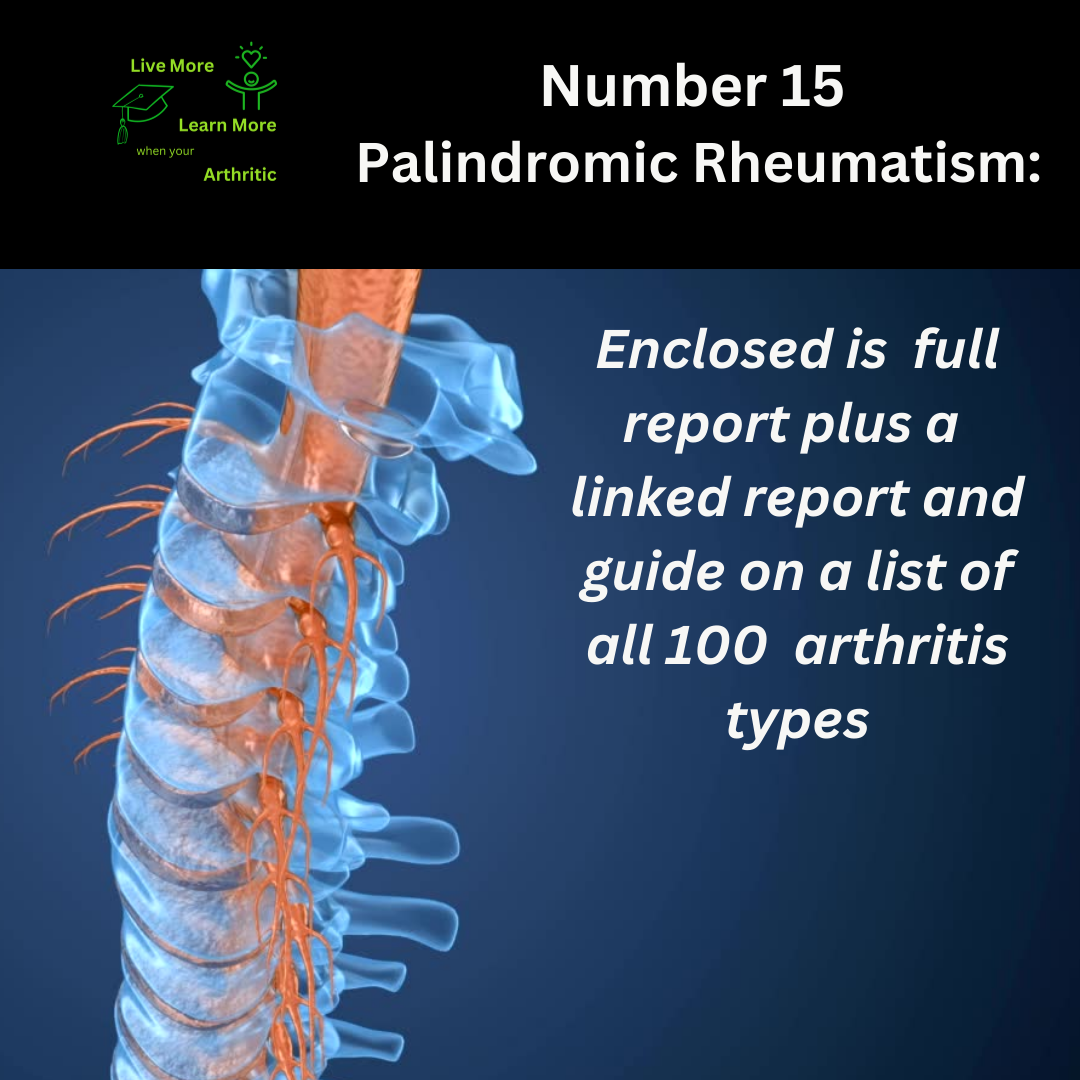
Palindromic Rheumatism: Number 15 on the list of 100 types of Arthritis
Palindromic Rheumatism: The Unpredictable Journey
Imagine waking up one day feeling perfectly fine, only to have your joints suddenly start protesting like a picket line in full swing. This rollercoaster of symptoms is the reality for those with Palindromic Rheumatism, a rare and enigmatic form of arthritis that likes to keep everyone guessing.
 Description of Palindromic Rheumatism
Description of Palindromic Rheumatism
Palindromic Rheumatism, despite sounding like a tongue-twister, is actually a type of inflammatory arthritis characterized by sudden and recurrent episodes of joint pain, swelling, and stiffness. Unlike conventional arthritis, it doesn’t leave a permanent mark—it’s more of a pop-up shop that comes and goes without warning.
Causes and Triggers
Now, onto the big question: what causes this topsy-turvy joint behavior? Well, the jury’s still out on that one. Some suspect it’s the immune system going a bit overboard and mistaking your joints for an all-you-can-attack buffet. Triggers can range from stress to certain foods or even just Mother Nature having a laugh with the weather.
Symptoms and Challenges
Picture this: your fingers suddenly decide to take on the characteristics of sausages, and your knees refuse to play nice during your morning yoga routine. That’s Palindromic Rheumatism for you—joints that feel like they’ve been hit by a surprise party of inflammation. Limited range of motion? Check. Unpredictable flare-ups? Double check.
Age of Onset and Prognosis
Palindromic Rheumatism tends to make its debut during the prime of adulthood, typically between the ages of 20 and 50. The good news? It’s not here to crash the party for good. The bad news? It can be a bit of a party pooper while it’s around, although it usually doesn’t lead to permanent joint damage.
Quality of Life and Proactive Management
Can you tame the Palindromic Rheumatism beast and reclaim your life? Absolutely! A proactive approach is key. This includes tuning in to your body’s signals, identifying triggers (that spicy curry might be suspect!), and adopting lifestyle changes like stress reduction techniques, regular exercise, and maintaining a balanced diet.
Complications and Beyond
While Palindromic Rheumatism doesn’t typically throw life-threatening curveballs, it can tag along with other autoimmune pals like rheumatoid arthritis or lupus. This dynamic duo might mean your immune system has a tendency to throw parties when it shouldn’t.
 Holistic Discoveries and Hopeful Insights
Holistic Discoveries and Hopeful Insights
In the quest for relief, some explorers have found solace in holistic havens—think acupuncture, herbal remedies, or the magic touch of yoga. While scientific validation is still catching up, these natural approaches offer hopeful avenues for those seeking a well-rounded strategy.
The Interconnected Web of Health
Last but not least, Palindromic Rheumatism isn’t an island unto itself. It likes to mingle with other conditions, particularly autoimmune siblings. Knowing its fellow troublemakers can help paint a clearer picture for healthcare providers and guide treatment strategies.
In the grand tapestry of health, Palindromic Rheumatism adds a splash of unpredictability—but armed with knowledge, humor, and a proactive spirit, those affected can navigate its twists and turns with resilience and optimism. After all, life’s too short to let a little joint mischief steal the show!